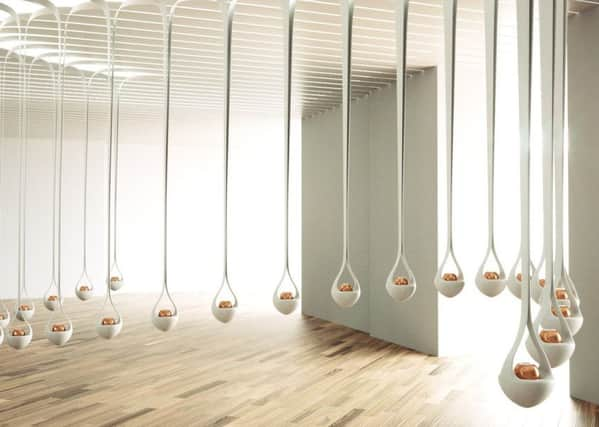Travel: Springtime in Paris at the new Grand Musée du Parfum


In a softly-lit basement on Paris’ elegant Rue Faubourg Saint Honoré I’m on a journey back in time. I’m visiting the new Grand Musée du Parfum and on the wall hangs an ancient Egyptian stelae covered in mysterious hieroglyphs. They describe kyphi, the oldest perfume known to man, a spicy incense that was burnt in temples across the ancient world. Below the inscription, a glowing marble bowl stands on a simple plinth. I lean over and a waft of the archaic scent blows into my face. The heady aromas of frankincense and pine resin make my nostrils tingle and for a fleeting moment I’m transported back 4,000 years to the time of the pharaohs.
The Rue Faubourg Saint Honoré is the spiritual home of Paris’ perfume industry and dates back 300 years to when Louis XIV died and the French court moved from Versailles to the Petit Palais in Paris. France’s great aristocratic families and financiers followed the court and built sumptuous mansions along the road leading out of the city. The perfumiers followed and quickly developed a roaring trade in nosegays and unguents to save their wealthy clientele from inhaling too much of the stench of the city. Nowadays the likes of Hermès, Pierre Cardin and Lancôme all have flagship stores here and as you wander down the street, clouds of intoxicating perfume waft out onto the pavements, drowning out that latest unpleasant smell to afflict Paris: diesel fumes.
Advertisement
Hide AdDespite a long history of revolutions and republics, the Rue Faubourg Saint Honoré still exudes an air of aristocratic exclusivity. Home to the Élysée Palace and the heavily-guarded British and American embassies, in amongst the crisp military uniforms and fluttering flags, the gleaming white Art Deco façade of Hotel Le Bristol is a beacon for Parisian high society. I arrive for lunch and am ushered through a revolving door by a fleet of porters wearing immaculate tailored suits. I’m expecting to find an Art Deco palace and am taken aback by the exquisite 18th century decor. Under the watchful gaze of a portrait of Marie Antoinette, I sit down to a light lunch in the foyer’s buzzing Cafe Antonia. The menu, created by Michelin-starred chef Eric Frechon, is a masterclass of bistro classics. I opt for a dish of delicately seared scallops served on a bed of buttery soft baby leeks. When the waitress appears with a platter of exquisitely crafted cakes, I’m mindful of Marie Antoinette and the infamous “let them eat cake” story. Nevertheless I choose a wild strawberry tart topped by a wafer thin sheet of gold leaf. The lightly-scented strawberries dissolve into the velvety crème pâtissier and my conscience is eased when I remember Marie Antoinette never actually said those fateful words.
Inspired by the opening of the nearby Grand Musée du Parfum, Le Bristol has just launched a new Perfumes of Tea ritual. Each day four contrasting teas are chosen and guests are invited to smell the bouquets and choose their favourite. I opt for a wild cherry tisane and feel that the light floral notes and delicate pink colour would have gone down well in Versailles.
That afternoon in the Grand Musée du Parfum, I head to the upper galleries which are full of exhibits designed to keep even the most tech-savvy of millennials engaged. In one gallery a digital sculpture linked to the Twitter community sends waves of colour over the floor whenever the word perfume is uploaded while in “the garden of scents”, strange machines resembling giant anglepoise lamps pump out popular scents ranging from the seaside to a crackling fire. Some perfumes, however, are timeless in their simplicity and don’t need artificial enhancement. I head back to the hotel where the lunchtime crowds have gone and the only guest in the foyer is Fa-raon, Le Bristol’s pampered Burmese cat who lies curled up on a chair. The walk to my room takes me along a colonnade lined with miniature orange trees in full bloom. The intoxicating fragrance stops me in my tracks and summer seems just around the corner.
The following afternoon I sit in Eurostar’s stylish new business premier lounge and a fashionista walks past wearing a heady perfume with the unmistakable base of neroli. The Grand Musée du Parfum teaches visitors about the importance of memory in recognising smell and the fresh, sweet fragrance of orange blossom is one I’ll always associate with this legendary hotel.
Fact box
Eurostar operates up to 21 daily services from London St Pancras International to Paris Gare du Nord. One way fares from London start from £29 and from Edinburgh via Kings Cross, £68.50 (based on a return journey). The fastest journey time from London to Paris is 2 hrs 15 mins. Tickets are available at www.eurostar.com or 03432 186 186.
For more information about Le Bristol, visit www.lebristolparis.com